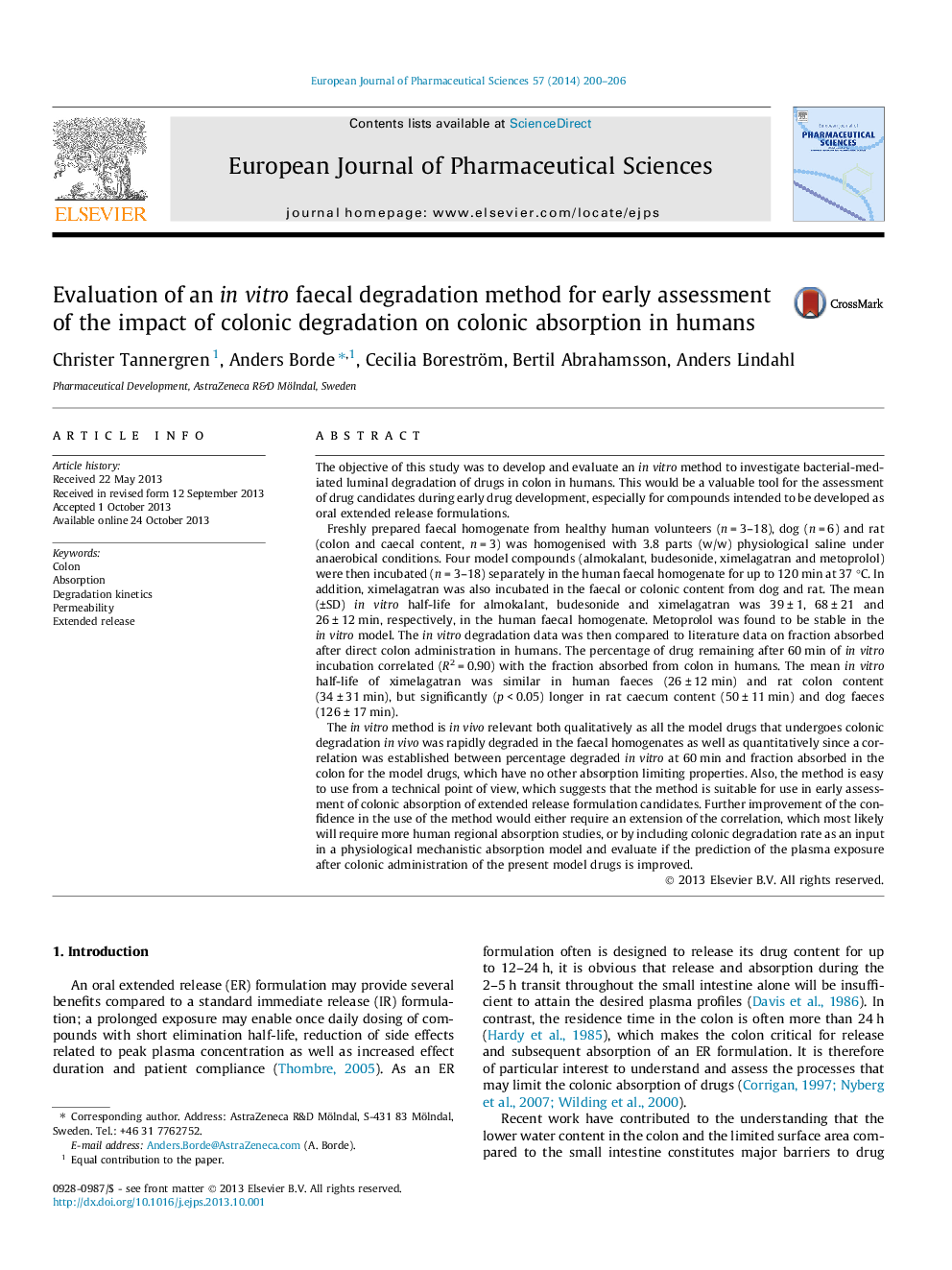| کد مقاله | کد نشریه | سال انتشار | مقاله انگلیسی | نسخه تمام متن |
|---|---|---|---|---|
| 5809991 | 1556193 | 2014 | 7 صفحه PDF | دانلود رایگان |

The objective of this study was to develop and evaluate an in vitro method to investigate bacterial-mediated luminal degradation of drugs in colon in humans. This would be a valuable tool for the assessment of drug candidates during early drug development, especially for compounds intended to be developed as oral extended release formulations.Freshly prepared faecal homogenate from healthy human volunteers (n = 3-18), dog (n = 6) and rat (colon and caecal content, n = 3) was homogenised with 3.8 parts (w/w) physiological saline under anaerobical conditions. Four model compounds (almokalant, budesonide, ximelagatran and metoprolol) were then incubated (n = 3-18) separately in the human faecal homogenate for up to 120 min at 37 °C. In addition, ximelagatran was also incubated in the faecal or colonic content from dog and rat. The mean (±SD) in vitro half-life for almokalant, budesonide and ximelagatran was 39 ± 1, 68 ± 21 and 26 ± 12 min, respectively, in the human faecal homogenate. Metoprolol was found to be stable in the in vitro model. The in vitro degradation data was then compared to literature data on fraction absorbed after direct colon administration in humans. The percentage of drug remaining after 60 min of in vitro incubation correlated (R2 = 0.90) with the fraction absorbed from colon in humans. The mean in vitro half-life of ximelagatran was similar in human faeces (26 ± 12 min) and rat colon content (34 ± 31 min), but significantly (p < 0.05) longer in rat caecum content (50 ± 11 min) and dog faeces (126 ± 17 min).The in vitro method is in vivo relevant both qualitatively as all the model drugs that undergoes colonic degradation in vivo was rapidly degraded in the faecal homogenates as well as quantitatively since a correlation was established between percentage degraded in vitro at 60 min and fraction absorbed in the colon for the model drugs, which have no other absorption limiting properties. Also, the method is easy to use from a technical point of view, which suggests that the method is suitable for use in early assessment of colonic absorption of extended release formulation candidates. Further improvement of the confidence in the use of the method would either require an extension of the correlation, which most likely will require more human regional absorption studies, or by including colonic degradation rate as an input in a physiological mechanistic absorption model and evaluate if the prediction of the plasma exposure after colonic administration of the present model drugs is improved.
Correlation between the fraction absorbed in colon in man (FAcolon) and the percentage of the study drug remaining after 60Â min after in vitro faecal degradation incubations with almokalant, budesonide, metoprolol and ximelagatran.65
Journal: European Journal of Pharmaceutical Sciences - Volume 57, 16 June 2014, Pages 200-206